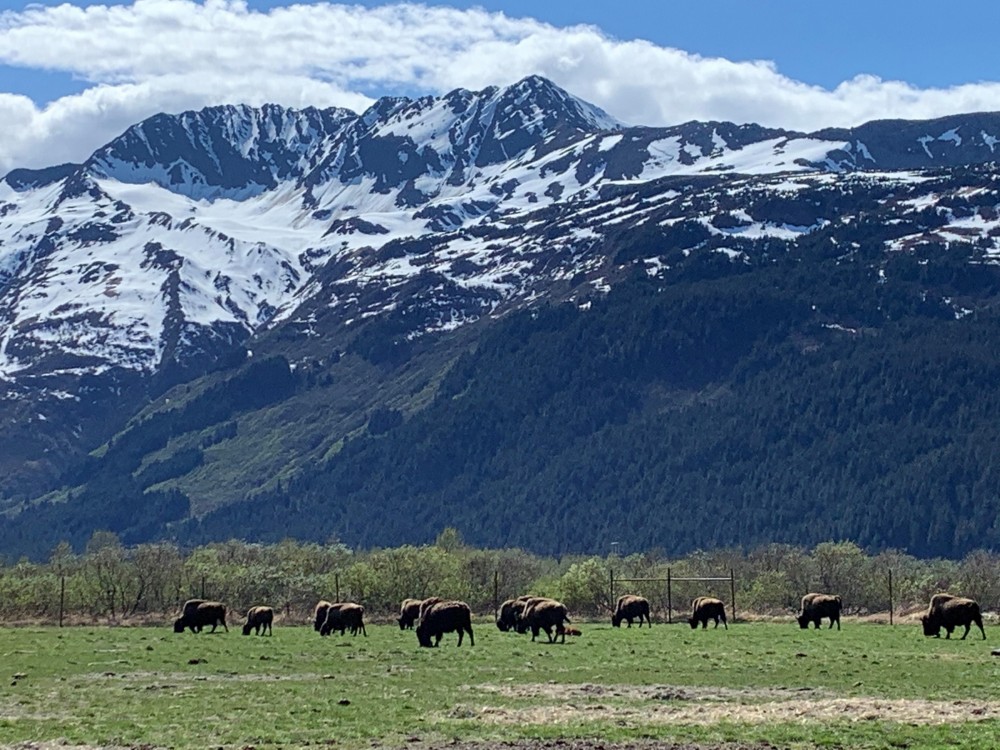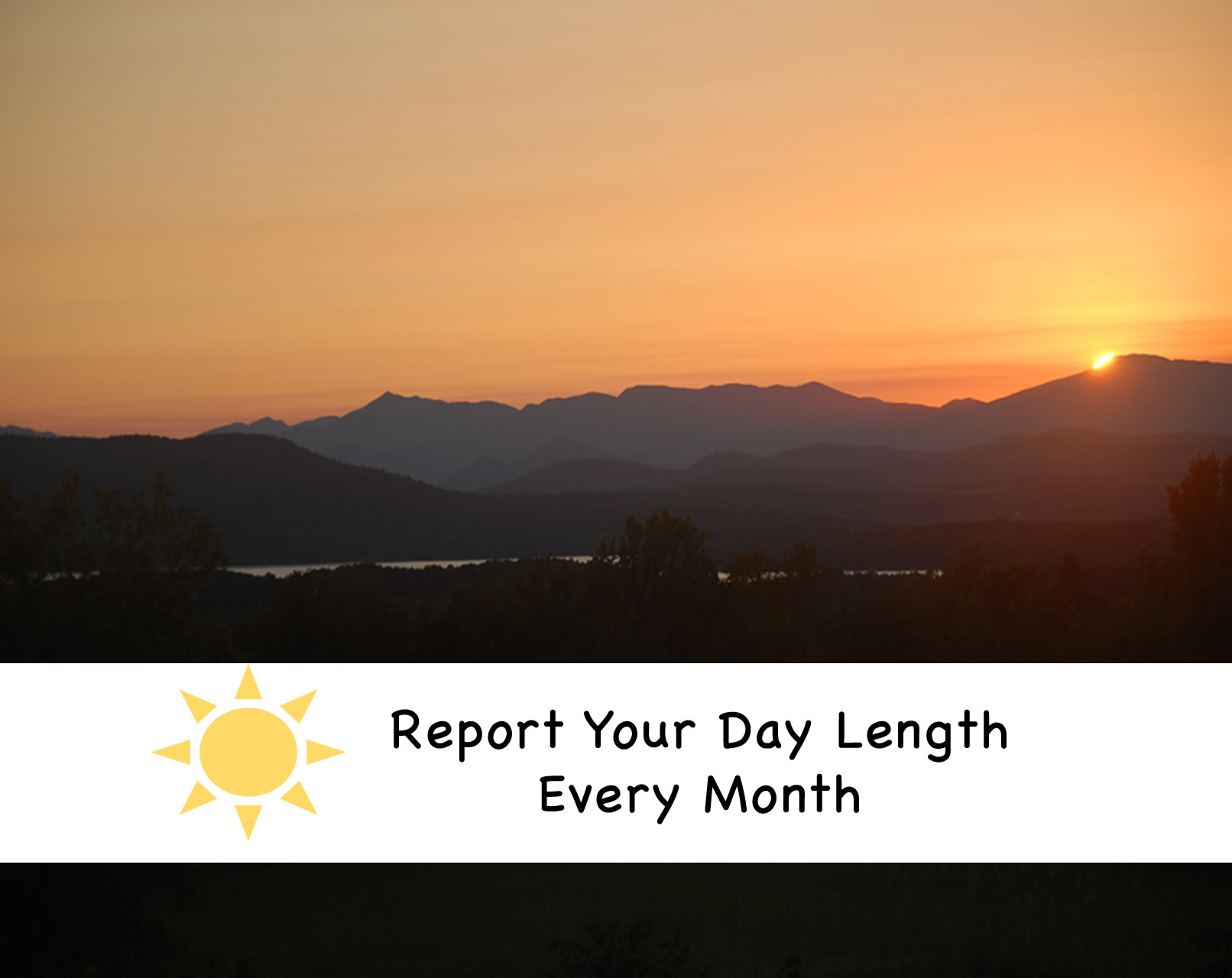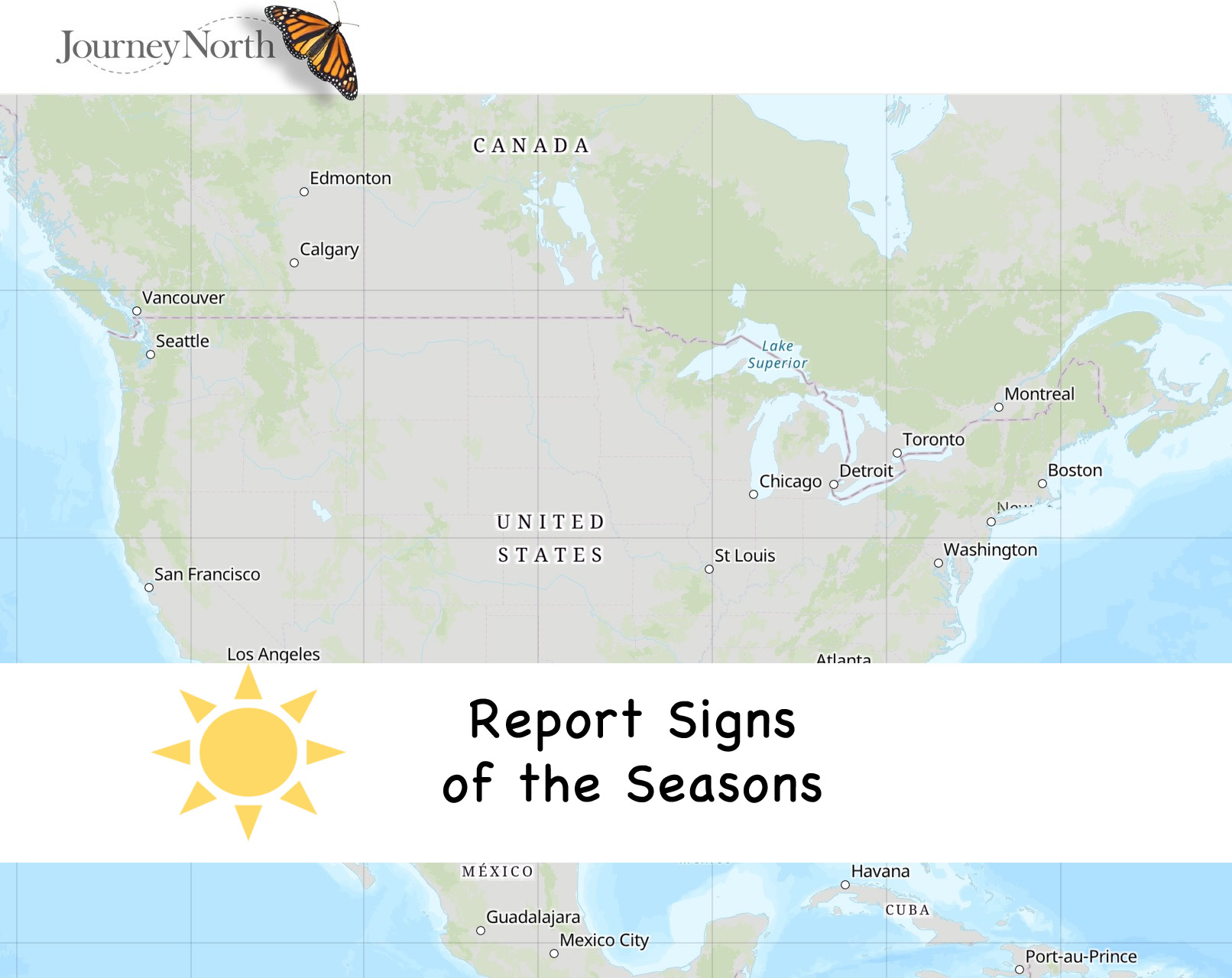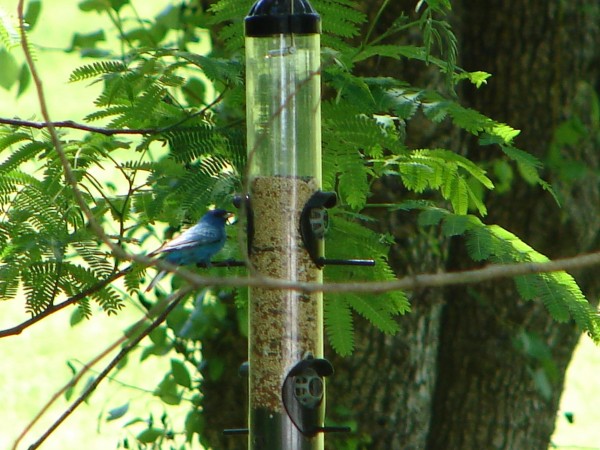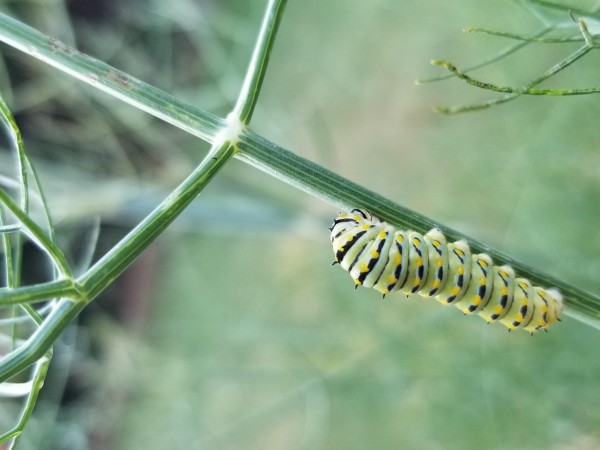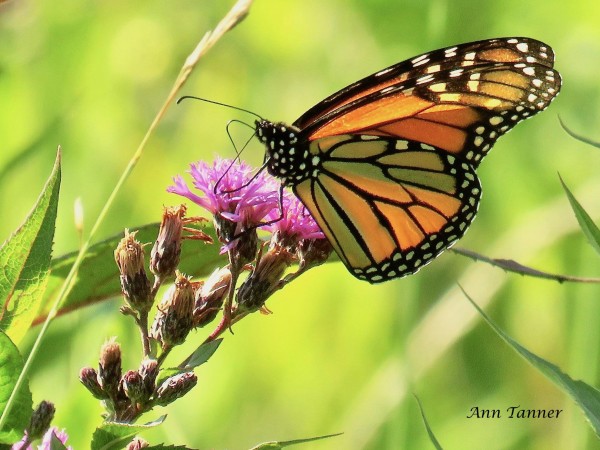Summer Solstice
Signs of Summer
Hot and humid weather, lush vegetation, and flourishing wildlife: summer is at the doorstep across North America. What are you observing?
From Union, MO: Bill shared, "he [Indigo Bunting] is back for his 2pm feeding and I finally caught him with my camera. I do believe there are still two Buntings in the area." (06/02/2020)
From Newburgh, IN: Amy said, "the dahlias have started to bloom." (06/05/2020)
From Tulsa, OK: Holli noticed her, "first black swallowtail Caterpillar of the season on a fennel plant." (06/16/2020)
Report your Day Length (Photoperiod) and Your Sign of Summer
- Step 1: Look up your sunrise/sunset for June 20 using Google or other internet search engines.
- Step 2: Calculate the length of time between sunrise and sunset.
- Step 3: Report your day length for June 20.
- Step 4: Explore the sunlight map.
- Step 5: Share and compare seasonal observations with people across North America.
Note: Summer is almost here and so is Pollinator Week. From June 22-28 and until August, Journey North will celebrate pollinators, specifically monarchs and hummingbirds.
Read Pivotal Pollinators: Small in Size, Large in Impact to find out more about the importance of pollinators and why Journey North will celebrate Pollinator Week not just June 22-28 but all summer long.

